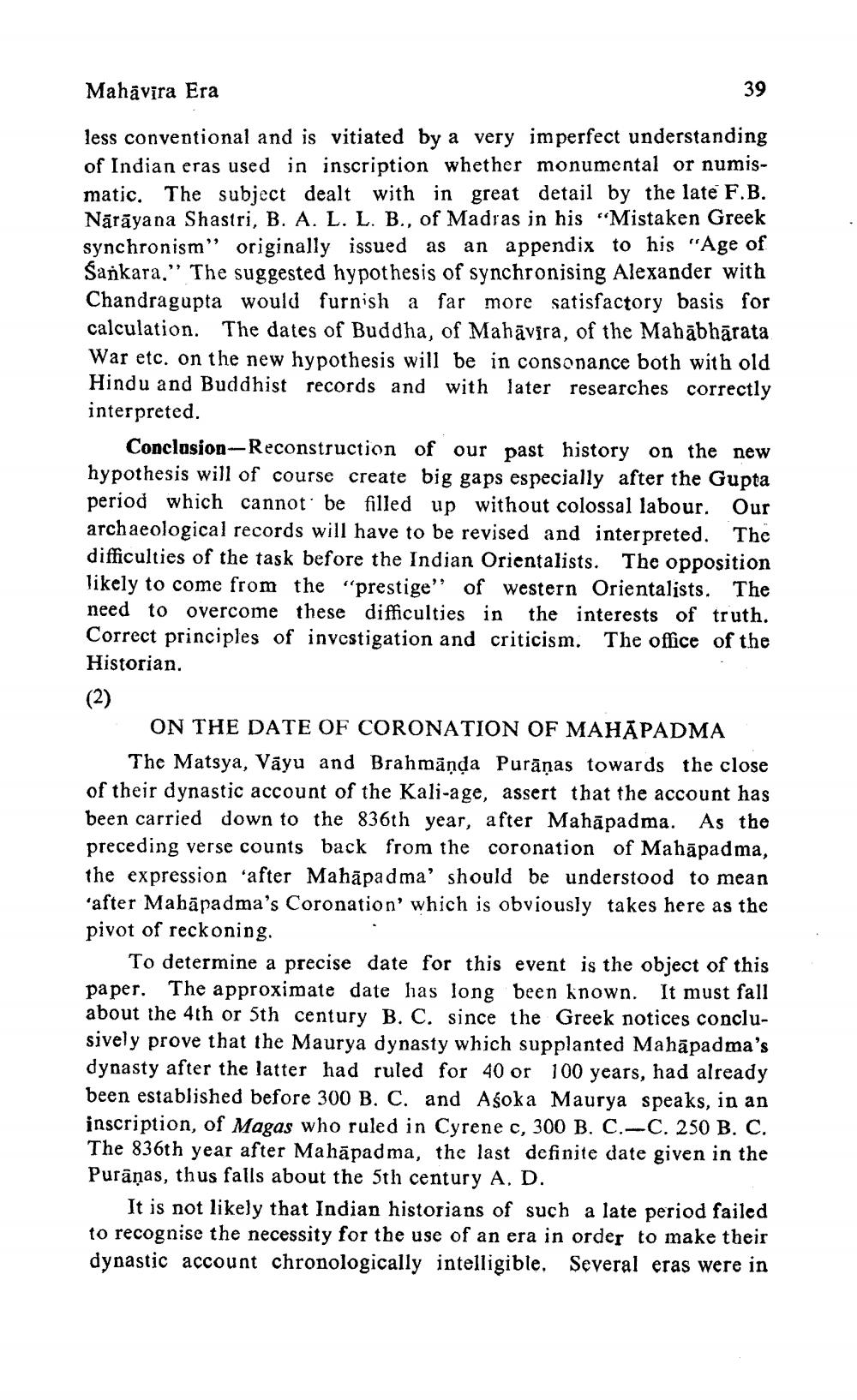________________
Mahavira Era
39
less conventional and is vitiated by a very imperfect understanding of Indian eras used in inscription whether monumental or numismatic. The subject dealt with in great detail by the late F.B. Nārāyana Shastri, B. A. L. L. B., of Madras in his "Mistaken Greek synchronism" originally issued as an appendix to his "Age of Sankara." The suggested hypothesis of synchronising Alexander with Chandragupta would furnish a far more satisfactory basis for calculation. The dates of Buddha, of Mahāvira, of the Mahābhārata War etc. on the new hypothesis will be in consonance both with old Hindu and Buddhist records and with later researches correctly interpreted.
Conclusion-Reconstruction of our past history on the new hypothesis will of course create big gaps especially after the Gupta period which cannot be filled up without colossal labour. Our archaeological records will have to be revised and interpreted. The difficulties of the task before the Indian Orientalists. The opposition likely to come from the "prestige" of western Orientalists. The need to overcome these difficulties in the interests of truth. Correct principles of investigation and criticism. The office of the Historian.
ON THE DATE OF CORONATION OF MAHAPADMA
The Matsya, Vāyu and Brahmāņda Purānas towards the close of their dynastic account of the Kali-age, assert that the account has been carried down to the 836th year, after Mahāpadma. As the preceding verse counts back from the coronation of Mahāpadma, the expression after Mahāpadma' should be understood to mean 'after Mahāpadma's Coronation' which is obviously takes here as the pivot of reckoning.
. To determine a precise date for this event is the object of this paper. The approximate date has long been known. It must fall about the 4th or 5th century B. C. since the Greek notices conclusively prove that the Maurya dynasty which supplanted Mahāpadma's dynasty after the latter had ruled for 40 or 100 years, had already been established before 300 B. C. and Asoka Maurya speaks, in an inscription, of Magas who ruled in Cyrene c, 300 B. C.-C. 250 B. C. The 836th year after Mahāpadma, the last definite date given in the Purāņas, thus falls about the 5th century A. D.
It is not likely that Indian historians of such a late period failed to recognise the necessity for the use of an era in order to make their dynastic account chronologically intelligible. Several eras were in




